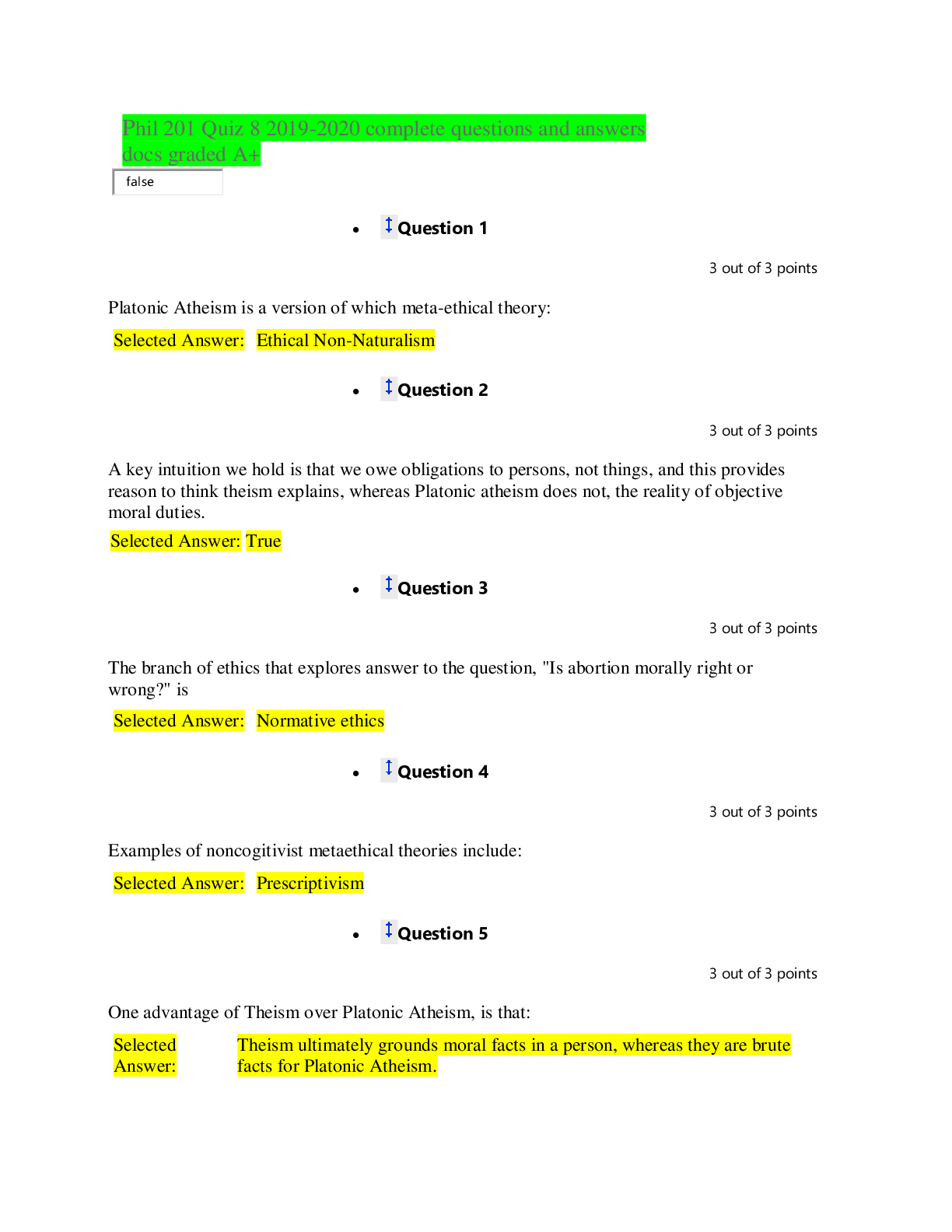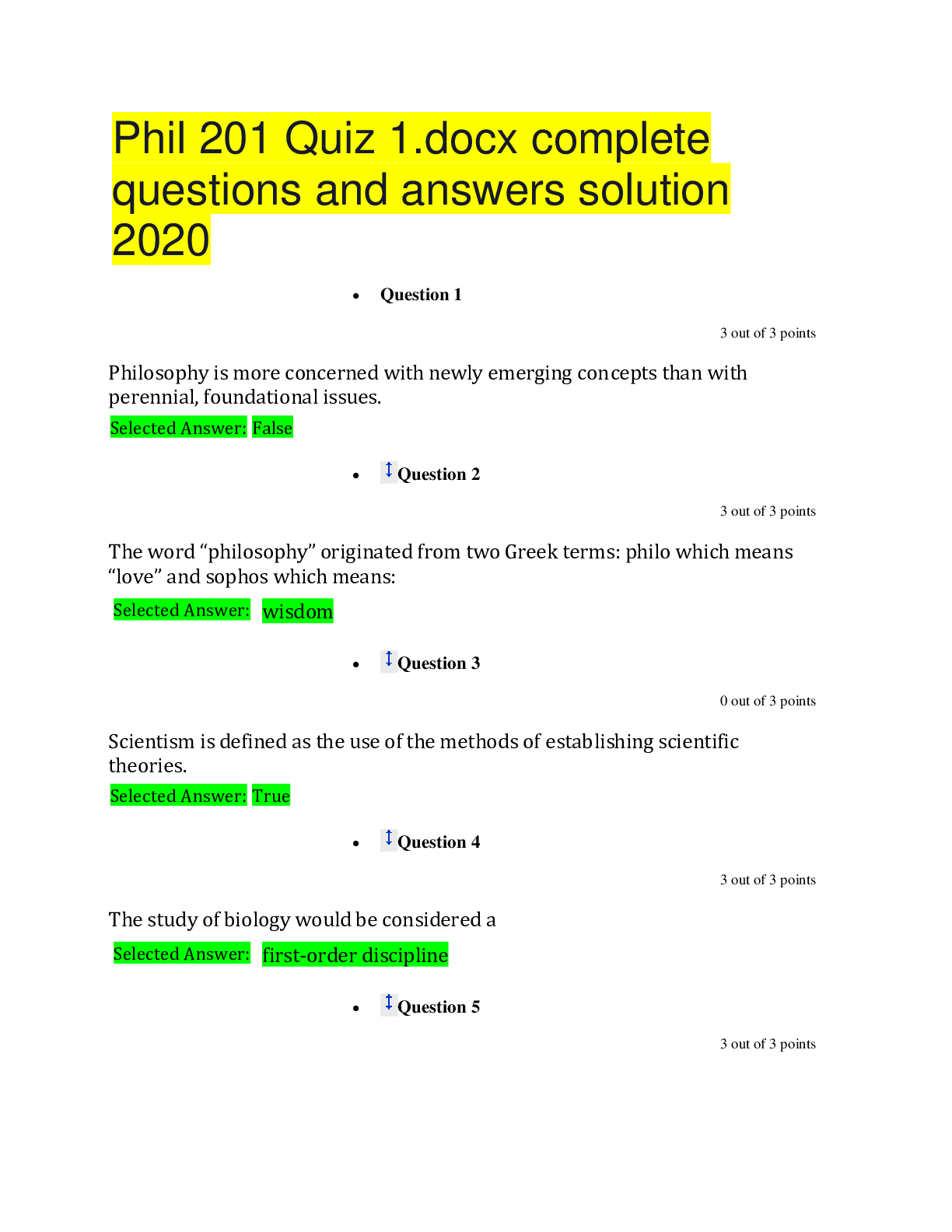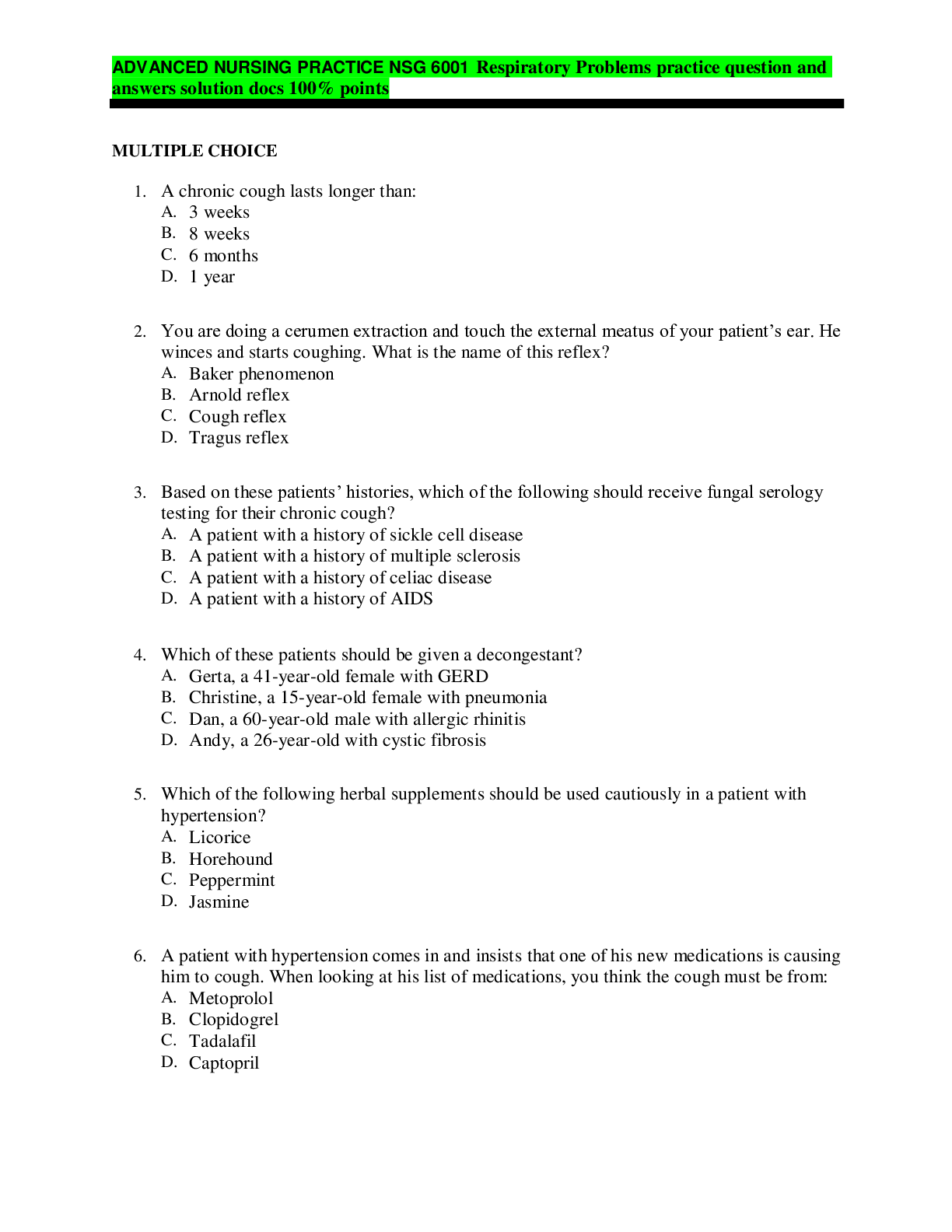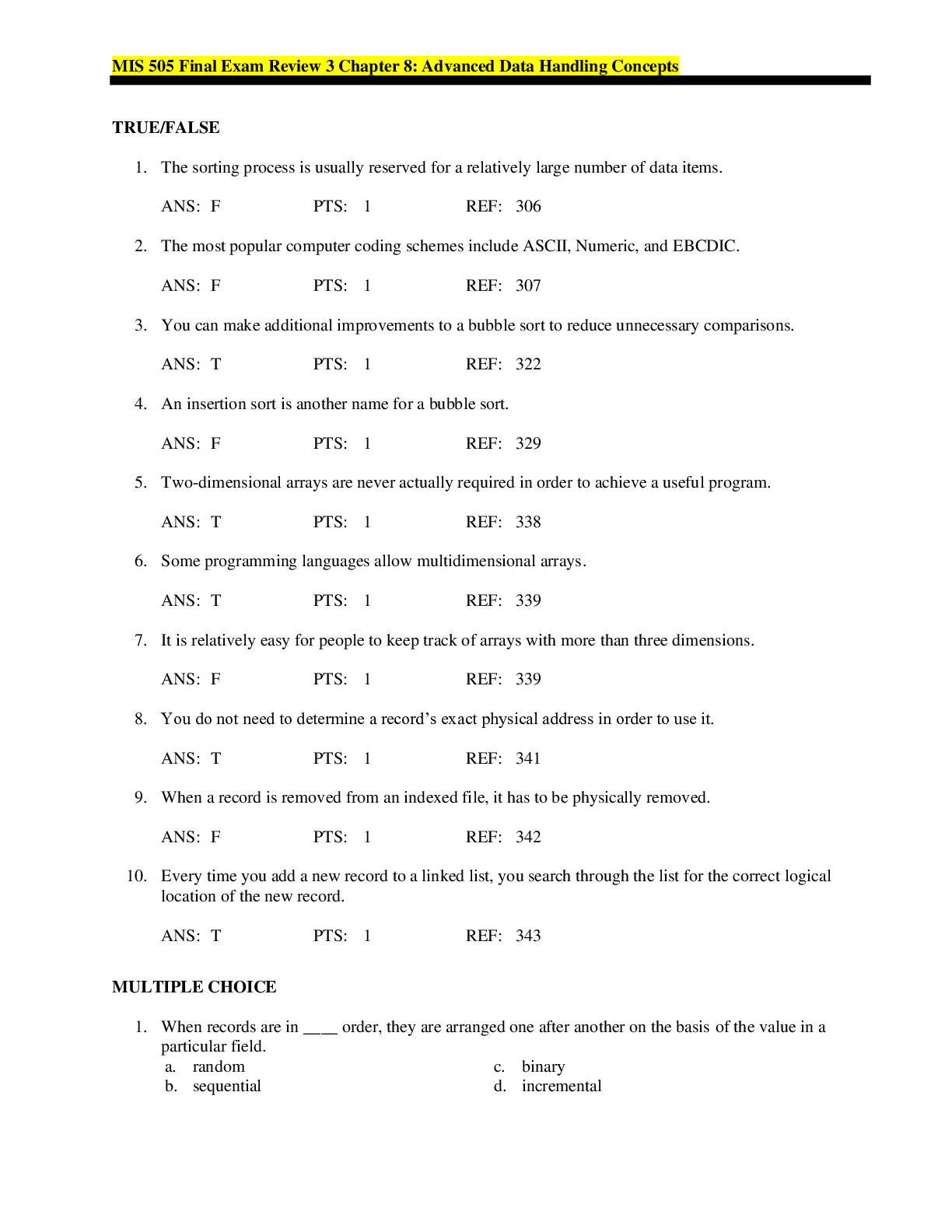*NURSING > QUESTIONS & ANSWERS > CAT 3 KAPLAN (NUR 3465_ Florida National University) Complete Questions and Answers Provided Exam St (All)
CAT 3 KAPLAN (NUR 3465_ Florida National University) Complete Questions and Answers Provided Exam Study Guide
Document Content and Description Below
1. The nurse auscultates crackles throughout all lung fields and measures a heart rate of 132 bpm, a respiratory rate of 30, and blood pressure of 102/54 mm Hg in a client recovering from an esophag... ectomy. Which action will the nurse take first? 1. Place the client on continuous pulse oximetry. 2. Monitor the client for changes in blood pressure. 3. Notify the health care provider. 4. Assist the client to use the incentive spirometer. Ans: 3 2. The nurse assigns a client diagnosed with cancer who is receiving chemotherapy to a nursing assistive personnel (NAP). Which instruction is most important for the nurse to include? 1. Perform hand hygiene frequently. 2. Wear a mask when entering the room. 3. Monitor the roommate for signs of infection. 4. Monitor the amount of protein the client eats. Ans: 1 3. The nurse provides care for a client diagnosed with a bone infection. The client was given intravenous morphine 3 hours ago and cannot have another dose for an hour. The client reports pain that is rated as 6 out of 10. The nurse implements several nonpharmacological approaches. The client’s pain level is now a 3 out of 10. Which action should the nurse take next? 1. Notify the health care provider. 2. Administer the morphine early. 3. Instruct the client that the next dose cannot be given for an hour. 4. Ask the client what an acceptable pain level is. Ans: 4 4. The nurse provides care for a client who was in a car accident as the result of falling asleep at the wheel. The client reports only being able to sleep 3 to 4 hours a night over the past month, due to stress. The client reports waking up frequently during the night. Which outcome is most appropriate for the nurse to include in the client’s plan of care? 1. Client will verbalize a plan to implement a sleep promoting program within the next week. 2. Client will fall asleep with less difficulty over the next 2 weeks. 3. Client will achieve a more normal sleep pattern within 2 to 4 weeks. 4. Client will achieve an improved sense of adequate sleep over the next 4 weeks. Ans: 1 5. The nurse reviews medications prescribed for a client recovering from surgery. Which prescription causes the nurse the most concern? 1. Diphenhydramine 50 mg PO at bedtime, as needed. 2. Furosemide 40 mg IV q.d. 3. Morphine sulfate 2 mg IV every hour, as needed, for pain. 4. Oxygen at 2 L/min via nasal cannula. Ans: 2 6. The nurse reads the result of a tuberculosis (TB) skin test on a client with no known risk factors for TB. Which finding will the nurse interpret as a positive result? 1. Erythema of 5 or more millimeters. 2. Induration of 5 or more millimeters. 3. Induration of 10 or more millimeters. 4. Induration of 15 or more millimeters. Ans: 4 7. The nurse provides care to an older adult client suspected of being a victim of physical abuse. Which action is appropriate for the nurse to implement when providing care to the client? (Select all that apply.) 1. Place the client in a single room near the nurses’ station. 2. Assess the client for bilateral injuries in ankles or wrist. 3. Identify, collect, and preserve physical evidence of abuse. 4. Take photographs to document signs of physical abuse. 5. Use standardized tool to screen for elder mistreatment. Ans: 2, 3, 5 8. A client receiving an enema reports cramping and discomfort when the nurse releases the clamp and places the container 12 inches above the client’s hip level. Which action will the nurse take next? 1. Instruct the client to take deep breaths. 2. Discontinue the enema. 3. Clamp the tubing. 4. Lower the enema bag below the level of the hips. Ans: 3 9. The nurse assesses clients waiting to be seen by the health care provider. Which client does the nurse identify to be seen first? 1. Client with myasthenia gravis reporting double vision and drooping of the right eye lid. 2. Client with a flat 9 mm induration area at the site of a tuberculin skin test placed 48 hours ago. 3. Client with a mean arterial pressure of 80 mm Hg. 4. Client with lung disease reporting dyspnea after walking up stairs. Ans: 2 10. A client experiences wide QRS complexes on telemetry, numbness of the feet, and tingling of both hands. Which medication will the nurse question before administering to this client? 1. Diltiazem. 2. Furosemide. 3. Spironolactone. 4. Metoprolol tartrate. Ans: 3 11. The nurse provides care for a client diagnosed with leukemia. The nurse notes the client has vomited a large amount of bloody emesis. Which action should the nurse take first? 1. Measure the vomi [Show More]
Last updated: 1 year ago
Preview 1 out of 36 pages
Instant download
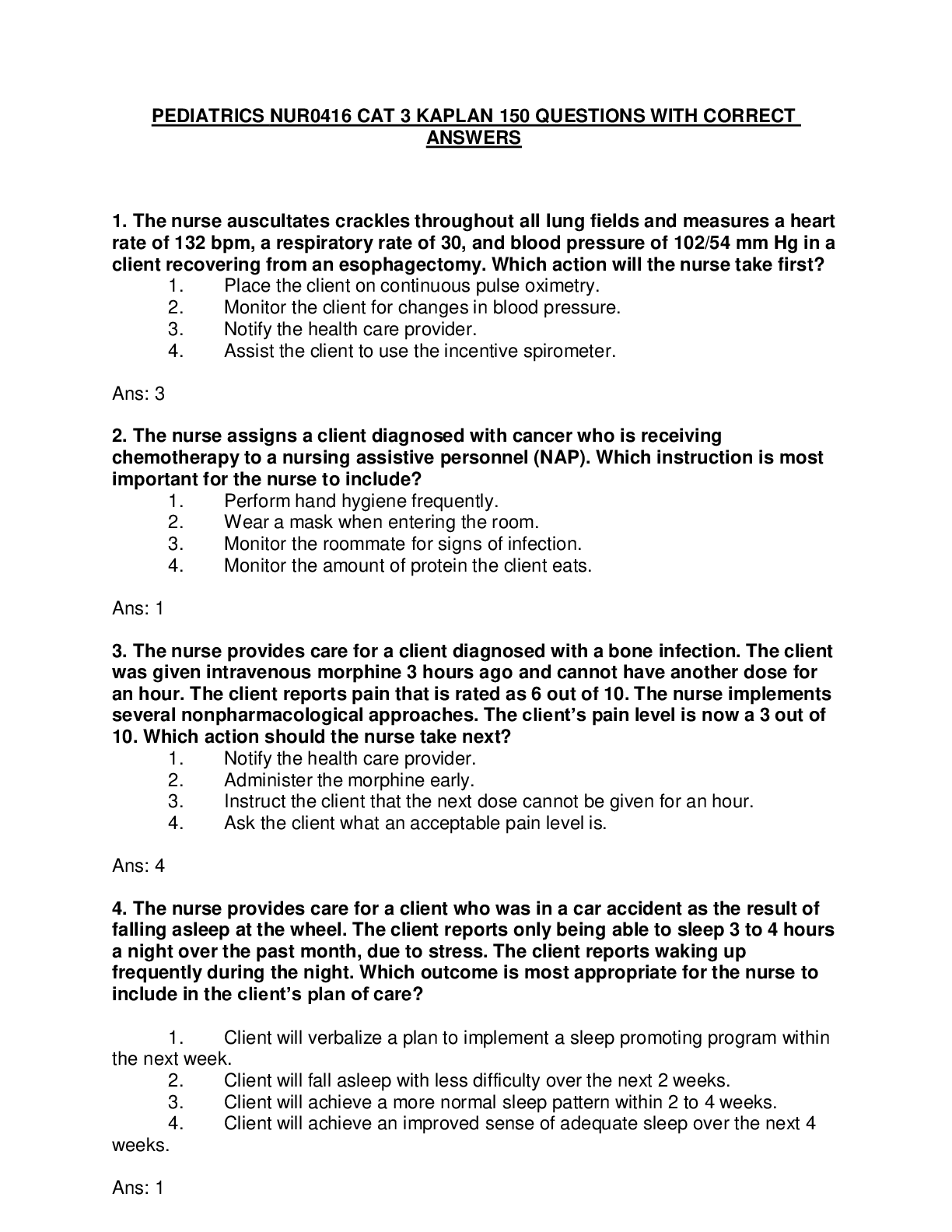
Buy this document to get the full access instantly
Instant Download Access after purchase
Add to cartInstant download
Reviews( 0 )
Document information
Connected school, study & course
About the document
Uploaded On
Dec 19, 2021
Number of pages
36
Written in
Additional information
This document has been written for:
Uploaded
Dec 19, 2021
Downloads
0
Views
119


.png)
.png)
.png)
.png)
.png)
.png)
.png)
.png)
.png)
.png)
.png)

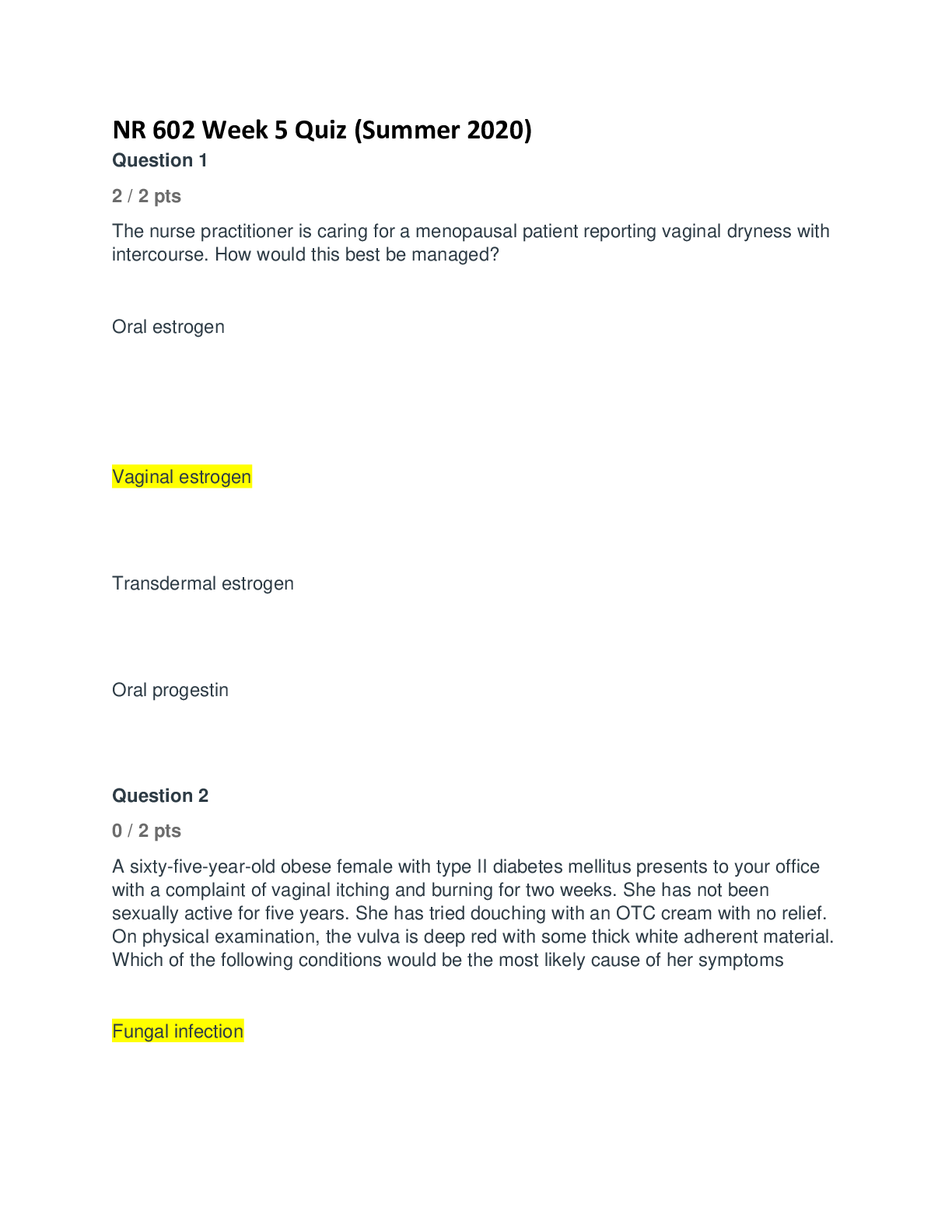
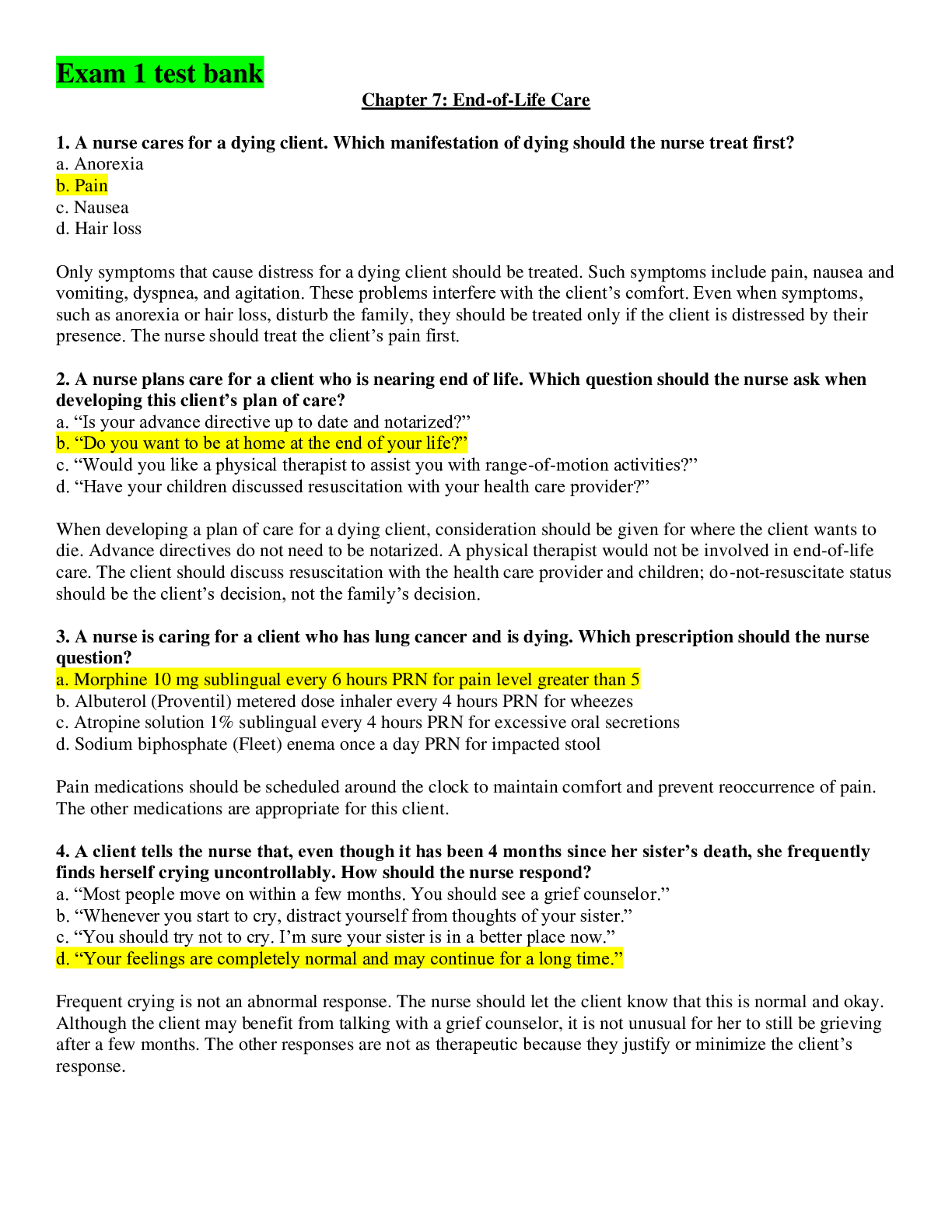

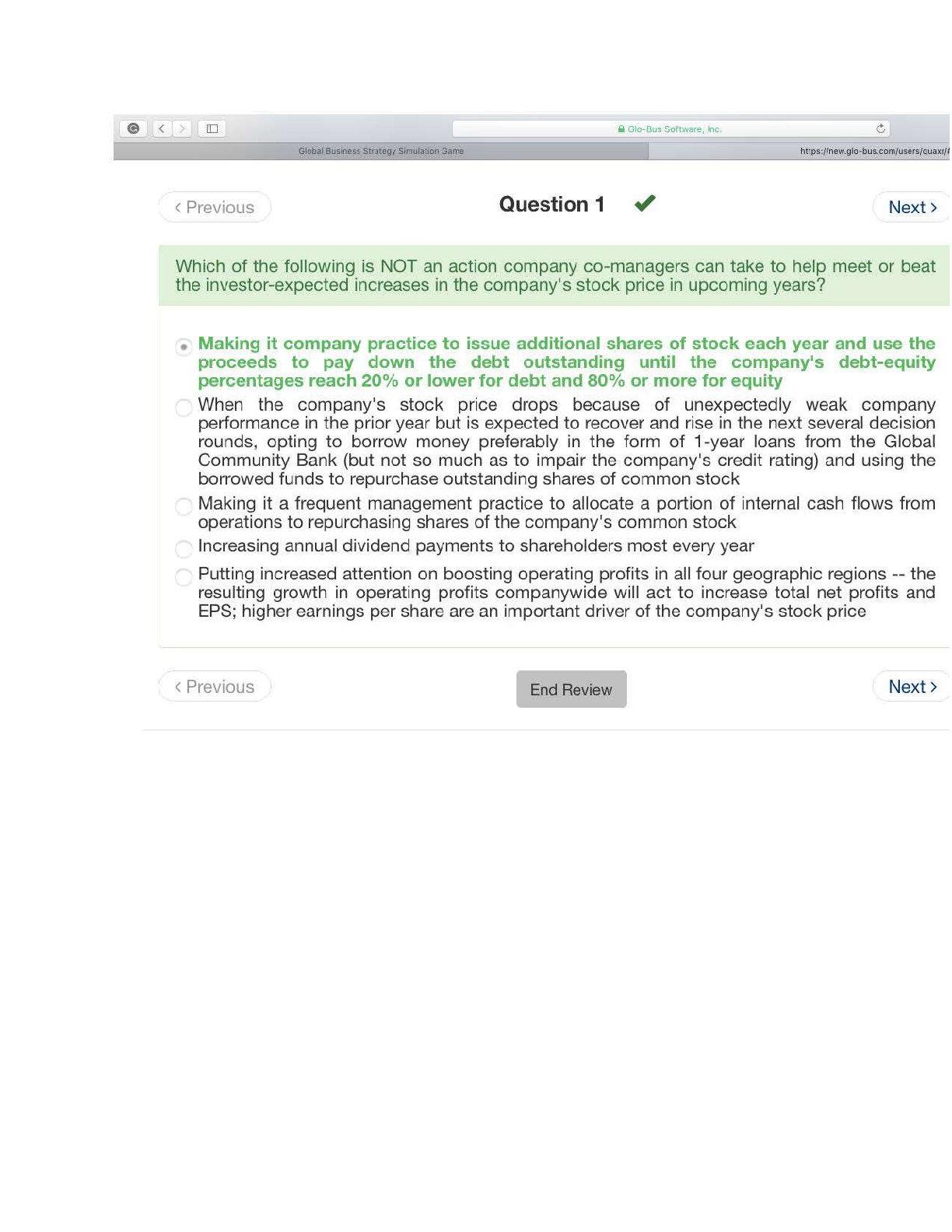
.png)
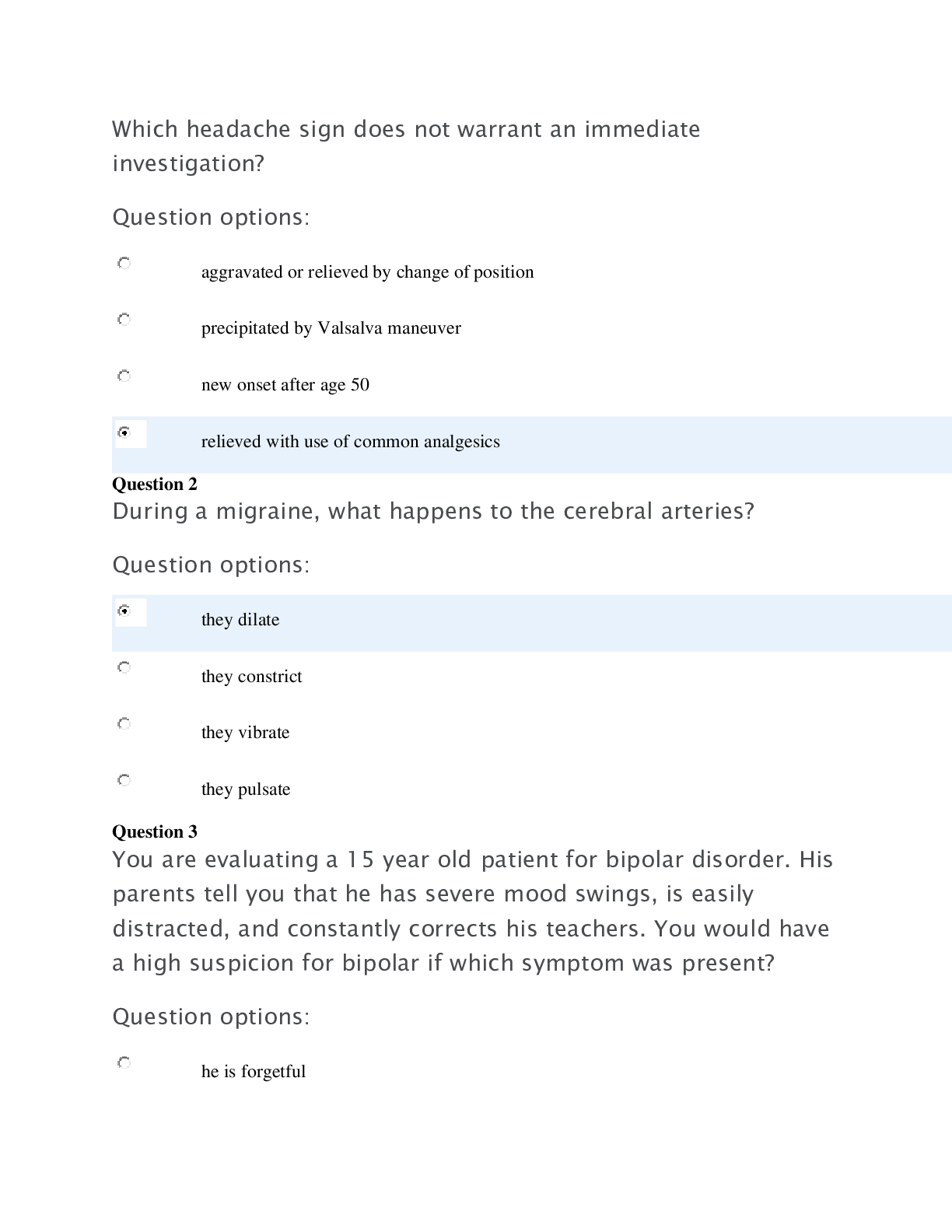

.png)
